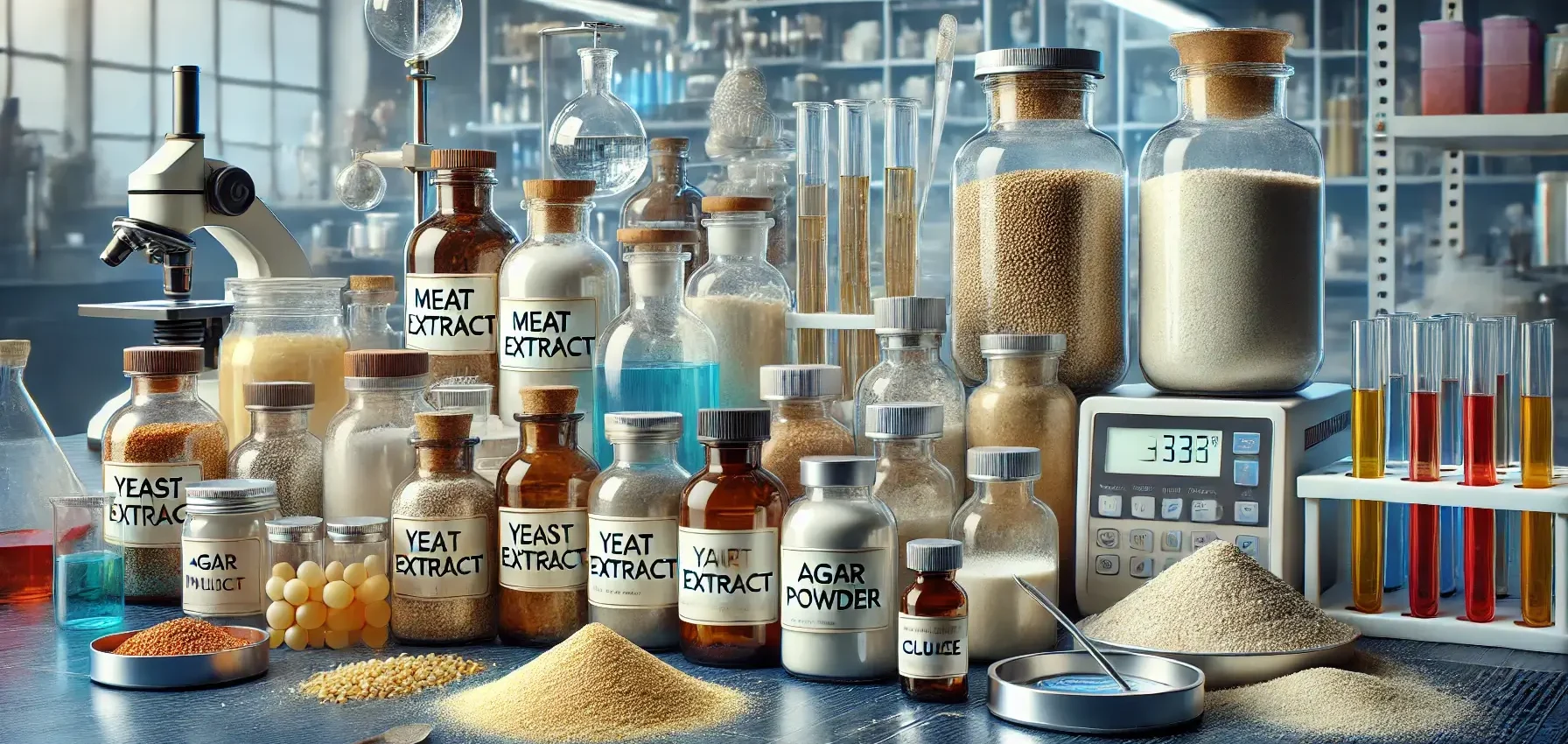- Raw Materials Used for Culture Media are essential for growing, isolating, and identifying microorganisms in the laboratory.
- The composition of these media can vary depending on the specific requirements of the microorganisms being cultured.
- Here are some of the common raw materials used in the preparation of culture media:
Basic Components of Raw Materials Used for Culture Media
- Peptones: Hydrolyzed proteins providing amino acids and peptides.
- Yeast Extract: Supplies vitamins, nitrogen, and other growth factors.
- Beef Extract: Provides amino acids, peptides, nucleotides, organic acids, vitamins, and minerals.
- Agar: A polysaccharide used as a solidifying agent in solid media.
- Carbohydrates: Provide carbon and energy sources (e.g., glucose, lactose).
- Mineral Salts: Provide essential ions (e.g., NaCl, K2HPO4, MgSO4).
Advertisements
Types of Culture Media:

-
Complex Media:
- Description: Contains a variety of ingredients like peptones, meat extracts, and yeast extracts, with unknown exact composition.
- Example: Nutrient Agar, Tryptic Soy Broth.
-
Defined (Synthetic) Media:
- Description: Composed of precise amounts of pure chemicals, with a known exact composition.
- Example: Minimal Salt Media.
-
Selective Media:
- Description: Contains specific agents to inhibit the growth of certain microbes while allowing others to grow.
- Example: MacConkey Agar (selects for Gram-negative bacteria).
-
Differential Media:
- Description: Includes indicators to differentiate between microbial species based on biological characteristics.
- Example: Blood Agar (differentiates based on hemolysis).
-
Enriched Media:
- Description: Supplemented with special nutrients to support the growth of fastidious organisms.
- Example: Chocolate Agar.
Advertisements
Uses of Culture Media:
- Isolation and Identification: To isolate and identify microorganisms from samples.
- Enumeration: To count the number of microorganisms in a sample.
- Sensitivity Testing: To determine the susceptibility of microorganisms to antibiotics.
- Research: To study the physiology, genetics, and biochemical properties of microorganisms.
- Industrial Production: For the production of antibiotics, vaccines, and other microbial products.
Click Here to Watch the Best Pharma Videos
Advertisements

